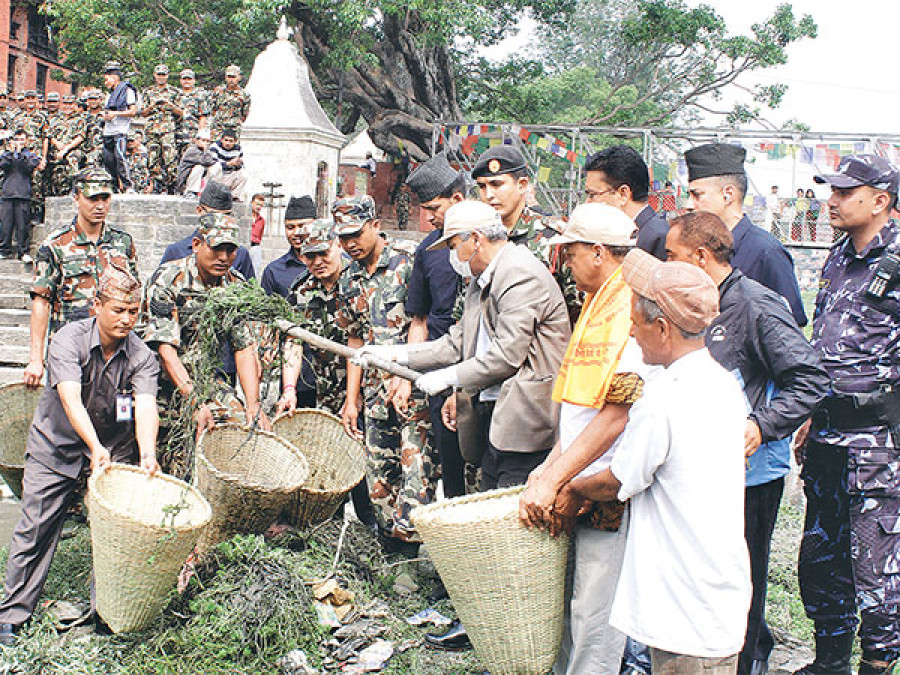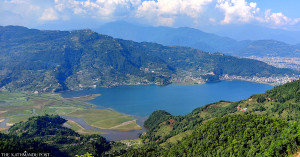Miscellaneous
Making every drop count
If one follows the Bagmati River to its source, one is struck by the stark changes in the river environment.
Pragati Shahi
But things are changing for the better now, courtesy the Bagmati Cleanup Campaign, which enters its hundredth week today. Around 100,000 people from all walks of life, including community leaders representing various organisations, will today get together to celebrate what might well be the longest-running cleanup campaign undertaken in any country across the globe. The campaign is aimed at improving the pitiable state of the river, which is also one of the holiest and most important river systems in the country. The movement has attracted more than 300,000 volunteers so far and garnered support both nationally and internationally, including from the 2014 Nobel-Prize winning Indian activist Kailash Satayarthi.
“The campaign has to do with not just making people aware about the condition of the river. It’s also to get them to work for its preservation. Now, after reaching the 100th week of the campaign, we believe that we have been able to garner the much-needed public support for preserving the river system,” says Kishore Thapa, one of the leading members and a regular participant of the Bagmati Cleanup Campaign since its launch in May 2013.
As Thapa points out, the campaign was launched with a specific objective about two years ago—to reinvigorate public interest in the project by raising awareness about the importance of the river and its surrounding and to involve the people in its conservation.
The Bagmati River system, comprising three other rivers (Dhobi Khola, the Manohara and the Bishnumati) and 50-odd rivulets, contributed to the peopling of the Kathmandu Valley civilisation. But with rapid population growth, coupled with unplanned urban sprawl and pollution, the river has turned into a toxic waterway.
“The people living in the city are to be blamed the most for the present state of the river. They allowed its condition to deteriorate to such an extent that its revival seemed next to impossible. Along with that, the lackadaisical attitude on the part of the government and its poor and inadequate interventions added to the problem,” says Tirtha Raj Shrestha, a senior environmentalist and one of the pioneers of the cleanup campaign.
For years now, the people of the Capital have been dumping garbage, emptying effluents and encroaching on the banks of the river. According to some estimates, almost 120,00 ropanies of the riverbanks have been appropriated for human settlements, commercial complexes and private hotels. Similarly, a report on the water quality of the Bagmati River published by the Environment and Public Health Organisation in 2003 found the Chemical Oxygen Demand (COD) of the river to be in excess of 400 mg/l within the city and in the immediate downstream areas—that is almost 10 times higher than what is considered normal. Likewise, the Biochemical Oxygen Demand (BOD) of the river was as high as 100 mg/l in Shankhamul, while it should have normally been between 15-20 mg/l. The research paper also noted that around 21 tons of domestic sewage was emptied into the river during the same time.
This particular campaign, launched in 2013 and led by Chief Secretary Lila Mani Poudel, is not the first of its kind, though. Since the establishment of the High Powered Committee for Integrated Development of the Bagmati in 1995, the government has made numerous efforts to clean the river. It has even spent billions of rupees on the different projects aimed at cleaning it. But all these efforts did not bring about any tangible improvement in the condition of the river. The Bagmati Cleanup Campaign, however, has been doing much better, unlike the previous efforts, which predominantly involved a handful of governmental and non-governmental organisations. It has been able to directly involve the residents of the city as well as numerous governmental and non-governmental organisations. In fact, besides the overwhelming support from the urbanites, the campaign has also seen the involvement of more than 950 different organisations.
The campaign has already collected over 3,000 tonnes of waste dumped into the river, all the while curbing people from dumping garbage in the river. “That practice has been reduced by almost 90 percent,” say the authorities at the Kathmandu Metropolitan City Office. Along with the waste-collection and reduction project, the authorities have also prioritised the need to build 21-kilometer long sewer lines on both sides of the Bagmati River stretch, from Gokarna to Chobar, and construct seven wastewater treatment plants to treat the river water and pump it back into the river system.
“Our aim is to clean the river, build tree-lined banks and urban parks and improve the environment of both the river and its surroundings,” says Poudel.
Furthermore, in order to maintain the flow of water into the river, which is crucial especially during the summers, the authorities are already working to construct a 19-metre dam at Dhap, near Sundarijal. The dam, once completed, will act as a reservoir to store water during the monsoon while feeding the river in the summer.
According to Thapa, the campaign will now shift the focus from collecting waste to improving the water quality, based on four different parameters—turbidity, dissolved oxygen, BOD and COD. “If we can just create the right environment for the river to flow properly, there will be a remarkable change in the water quality as well,” he adds.
Although the Bagmati River is still far from pristine, the latest campaign has ignited much hope among the people. Apart from volunteers and government and non-government organisations, the campaign is now also being enthusiastically backed by different private players, corporate houses and diplomatic entities.
“The positive results that have come out of the campaign have attracted a large number of people from different sectors,” says Thapa.
Today, many of these people will line up along the Bagmati and take a holy dip, something many had never thought they would be able to do in their lifetime.




 28.49°C Kathmandu
28.49°C Kathmandu










